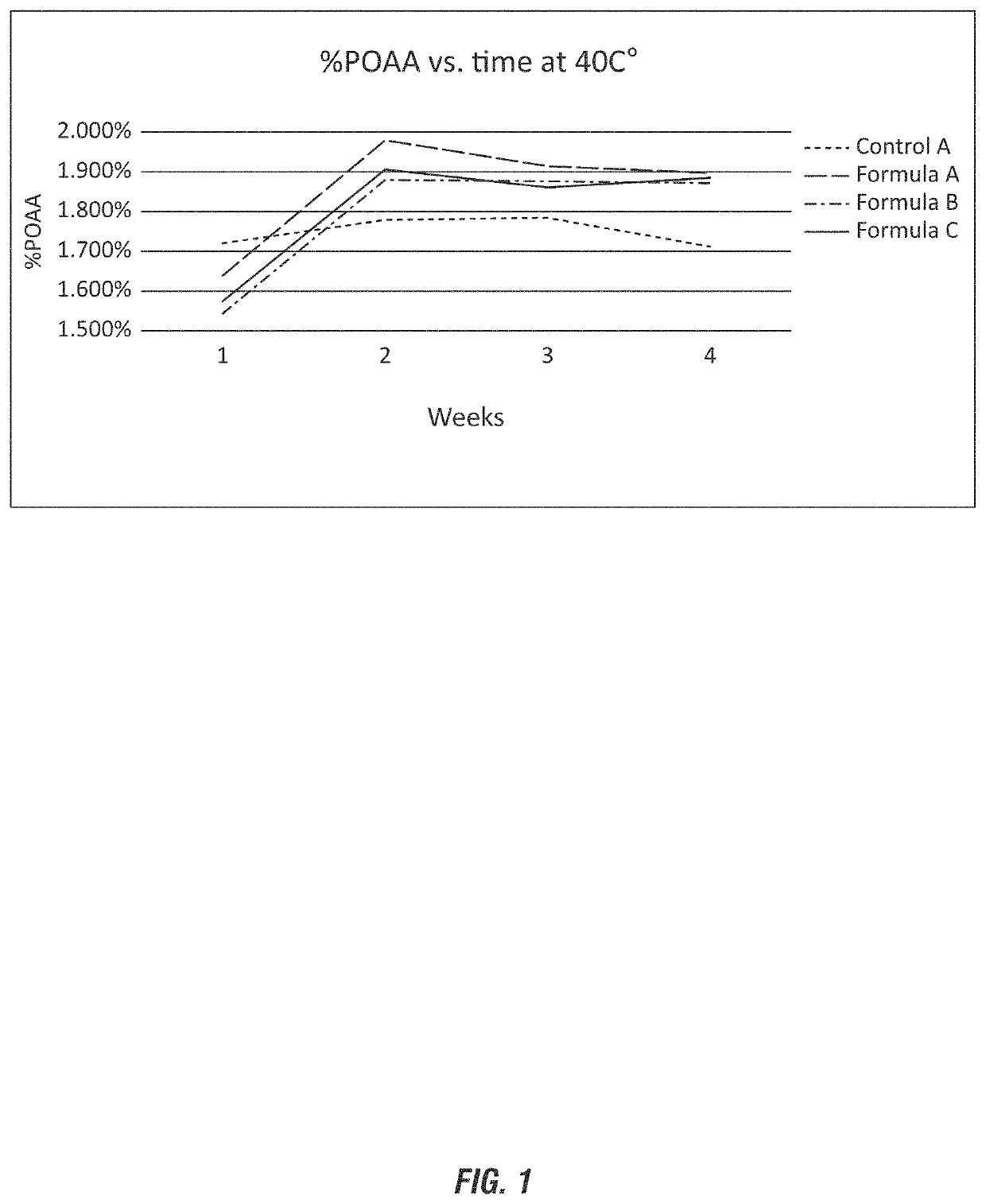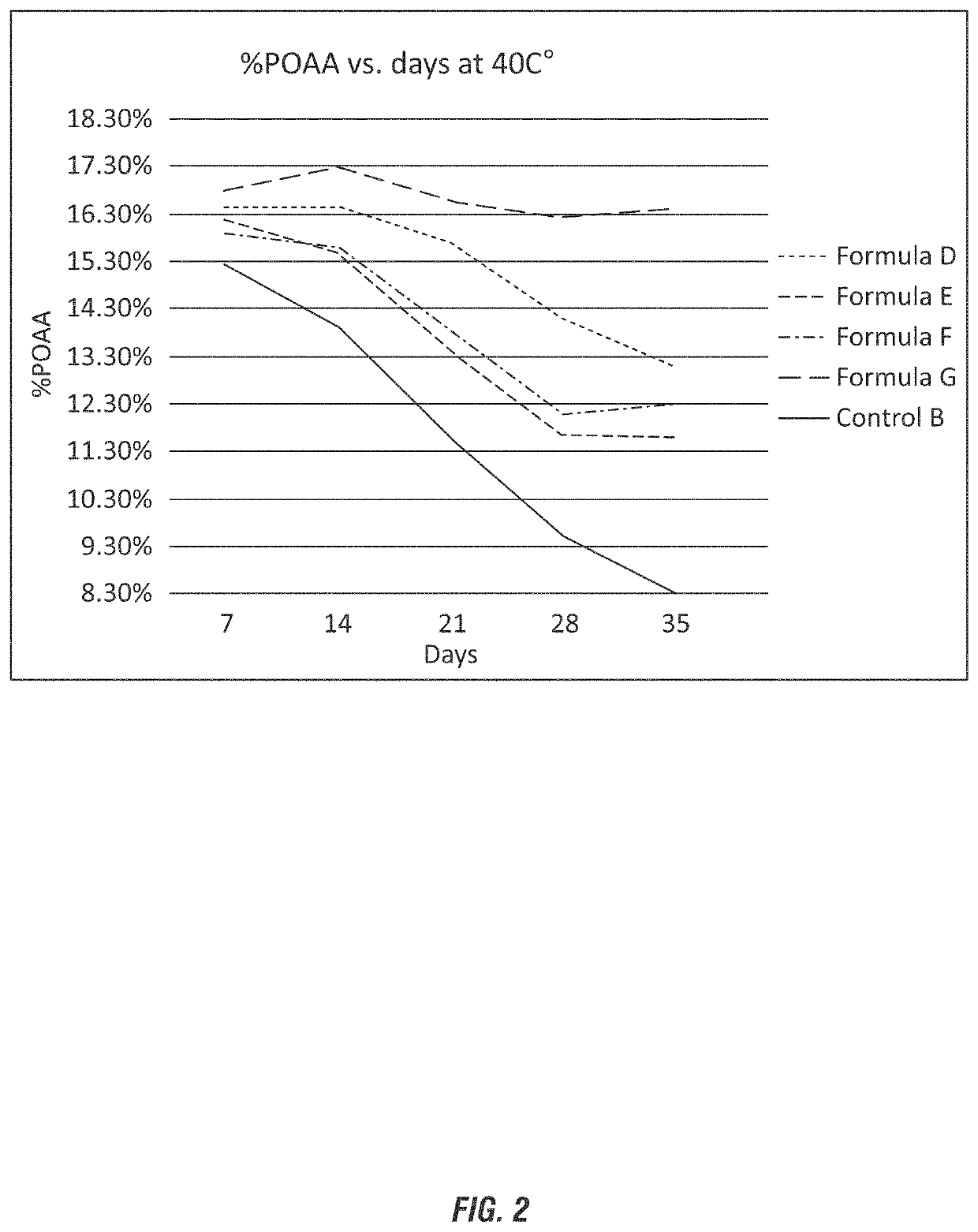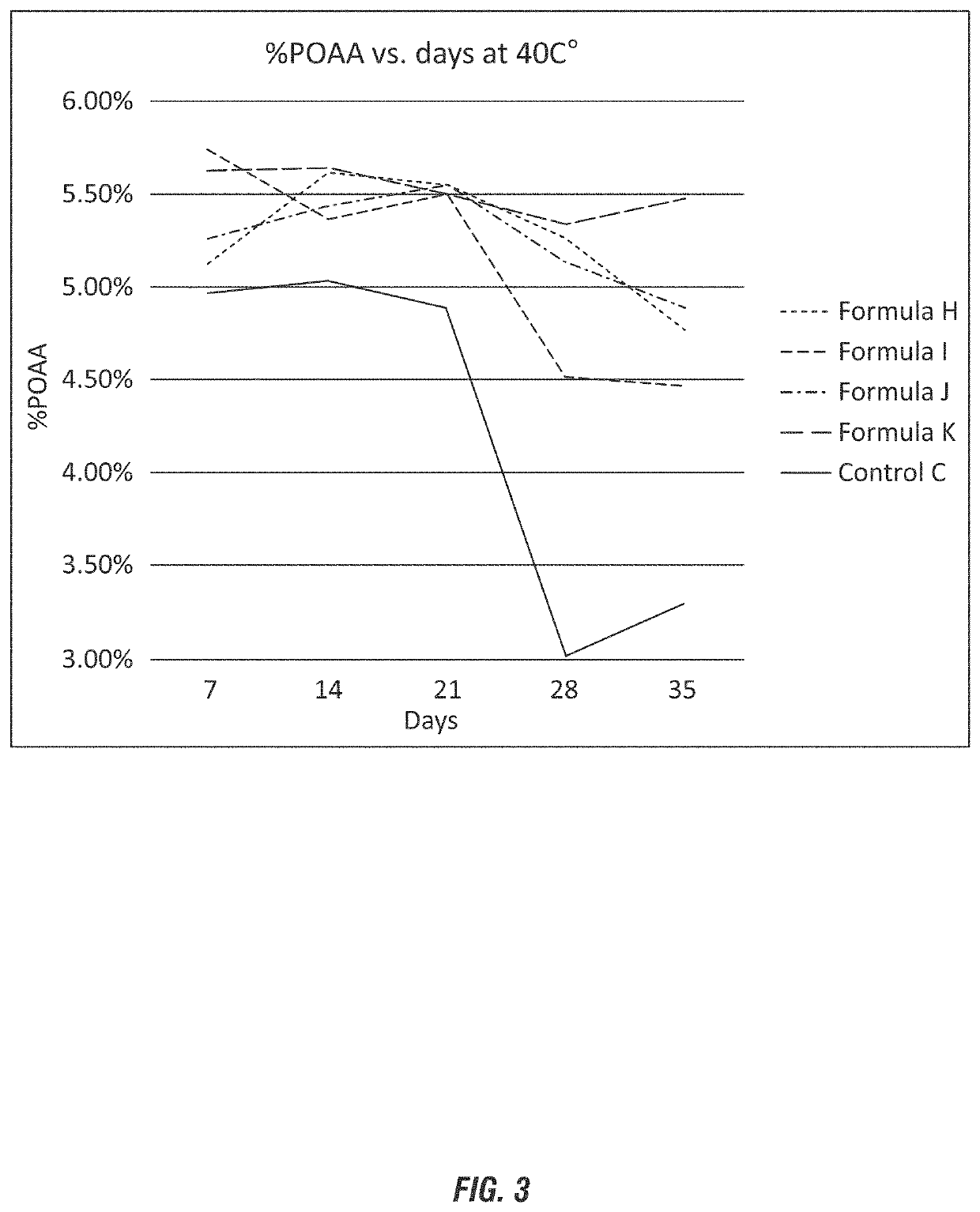Hydrogen peroxide and peracid stabilization with molecules based on a pyridine carboxylic acid
a technology of hydrogen peroxide and pyridine carboxylic acid, which is applied in the direction of biocide, detergent compounding agent, water treatment, etc., can solve the problems of hydrogen peroxide, environmental problems, unstable and explosive pure peroxycarboxylic acid, etc., and achieve effective cleaning and/or sanitizing, and stable peroxycarboxylic acid compositions
- Summary
- Abstract
- Description
- Claims
- Application Information
AI Technical Summary
Benefits of technology
Problems solved by technology
Method used
Image
Examples
example 1
[0125]Stability of peroxyacetic acid compositions were evaluated using nicotinic acid in comparison to dipicolinic acid and a negative control without a stabilizing agent. The evaluated peroxyacetic acid compositions are shown in wt-% in Table 2.
TABLE 2Raw materialControl AFormula AFormula BFormula CDI water4241.541.941.9H2O2 50%51515151Glacial Acetic5555AcidNicotinic acid0.50.1Dipicolinic acid0.1Phosphoric Acid222275%Total:100100100100SampleDayTest40° C.7H2O224.52%24.60%24.21%24.50%40° C.14H2O223.96%25.04%24.71%25.19%40° C.21H2O224.16%25.22%25.18%25.37%40° C.28H2O224.01%25.32%25.13%25.84%40° C.7POAA1.720%1.779%1.784%1.712%40° C.14POAA1.638%1.979%1.914%1.897%40° C.21POAA1.543%1.879%1.876%1.872%40° C.28POAA 1.57%1.906%1.861%1.885%
[0126]As depicted in FIG. 1, the Control A does not contain a stabilizing agent and shows a decline in (or loss of) the peroxyacetic acid at 4 weeks of approximately 10% (or 0.2% of the POAA). The 4 week measurement at 40° C. is indicative of 1 year measurem...
example 2
[0127]Based on the results of Example 1, additional peroxycarboxylic acid compositions were evaluated to compare the stabilizing efficacy of niacin to conventional stabilizing agents. The compositions are shown in wt-% in Table 3.
TABLE 3FormulationsFormulaFormulaControlRaw materialDFormula EFFormula GBDI water12.412.4512.4512.4512.55Glacial acetic acid3939393939Phosphoric acid00.850.850.850.8575%H2O2 50%47.647.647.647.647.6HEDP10000Picolinic acid00.1000Niacin000.100Dipicolinic acid0000.10Total:100100100100100
[0128]As depicted in FIG. 2, the Control B does not contain a stabilizing agent and shows a sharp decline in (or loss of) the peroxyacetic acid over time (between 7 days to 35 days) in excess of 40%. The performance of the additional stabilizing agents shows less significant loss of peroxyacetic acid. Formula F in comparison with Control B shows compatible stabilization capability to commonly used stabilizers, such as HEDP.
example 3
[0129]Based on the results of Examples 1 and 2, additional peroxycarboxylic acid compositions having lower concentrations of acetic acid relative to the hydrogen peroxide were evaluated to compare the stabilizing efficacy of niacin to conventional stabilizing agents. The compositions are shown in wt-% in Table 4.
TABLE 4FormulationsFormulaFormulaControlRaw materialHFormula IJFormula KCDI water3030.530.530.530.15Acetic Acid 100%1010101010Phosphoric Acid00.850.850.850.8575%H2O2 50%5959595959HEDP10000Picolinic acid00.1000Niacin000.100Dipicolinic acid0000.10Total:100100100100100
[0130]As depicted in FIG. 3, the control formulation does not contain a stabilizing agent and shows a sharp decline in (or loss of) the peroxyacetic acid over time (between 7 days to 28 days) in excess of 40%. The graph shows an increase at weeks 4-5 which was a result of titration error. The performance of the additional stabilizing agents shows less significant loss of peroxyacetic acid, demonstrating that the u...
PUM
| Property | Measurement | Unit |
|---|---|---|
| storage temperature | aaaaa | aaaaa |
| temperature | aaaaa | aaaaa |
| pH | aaaaa | aaaaa |
Abstract
Description
Claims
Application Information
 Login to View More
Login to View More - R&D
- Intellectual Property
- Life Sciences
- Materials
- Tech Scout
- Unparalleled Data Quality
- Higher Quality Content
- 60% Fewer Hallucinations
Browse by: Latest US Patents, China's latest patents, Technical Efficacy Thesaurus, Application Domain, Technology Topic, Popular Technical Reports.
© 2025 PatSnap. All rights reserved.Legal|Privacy policy|Modern Slavery Act Transparency Statement|Sitemap|About US| Contact US: help@patsnap.com



